#the arabian nights
Text
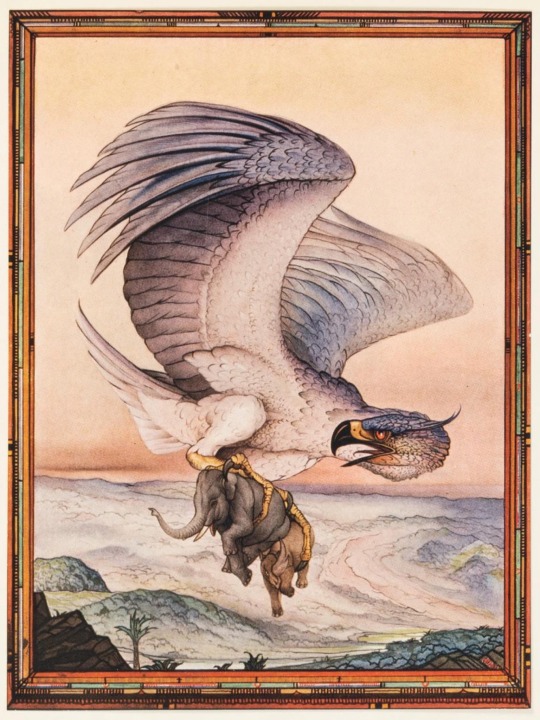
The Arabian Nights. Tales from the Thousand and One Nights
Hodder & Stoughton
Londonien
1924
Artist : E. J. Detmold
1K notes
·
View notes
Text

The Sultan orders to cut off Aladdin's head by Albert Robida
#aladdin#scimitar#art#albert robida#illustration#aladdin and the wonderful lamp#one thousand and one nights#1001 nights#arabian nights#folklore#folk tales#fairy tales#chains#sword#oriental#middle eastern#executioner#swords#folk tale#hanna diyab#china#chinese#the book of the one thousand and one nights#the arabian nights#antoine galland#mythology#asia#asian#sultan
45 notes
·
View notes
Text
Fantasy sights: William Heath Robinson
William Heath Robinson was an English cartoonist and illustrator of the early 20th century.
He did various Shakespearian illustrations - he most notably illustrated Twelfth Night, in such a way to convey its dark, eerie, ghostly and oniric tones beyond the comedy aspects...
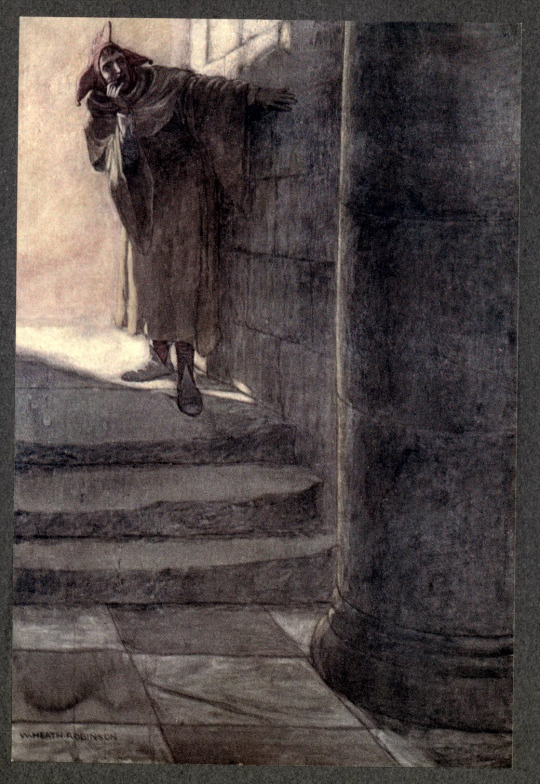

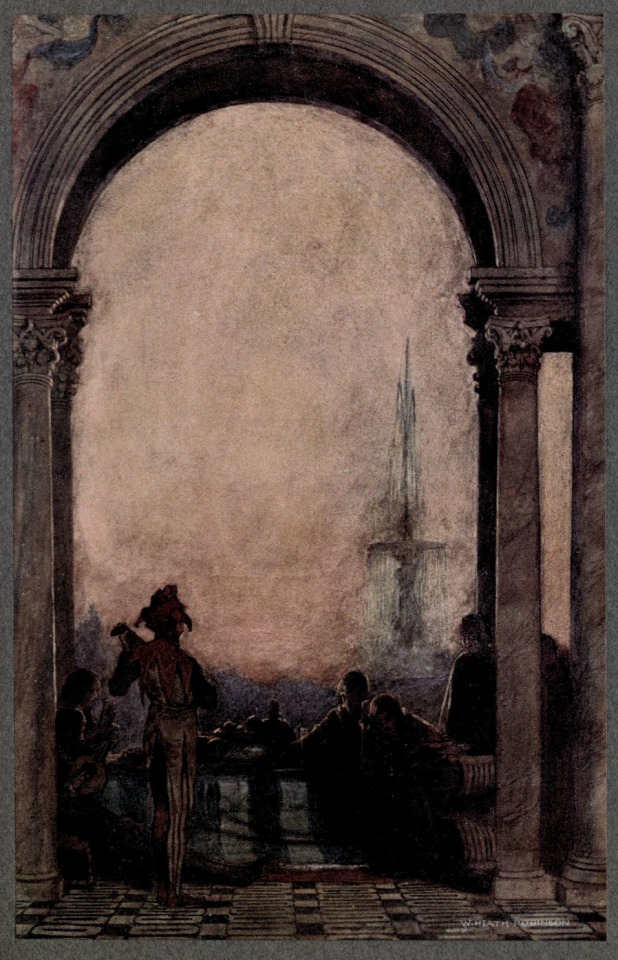
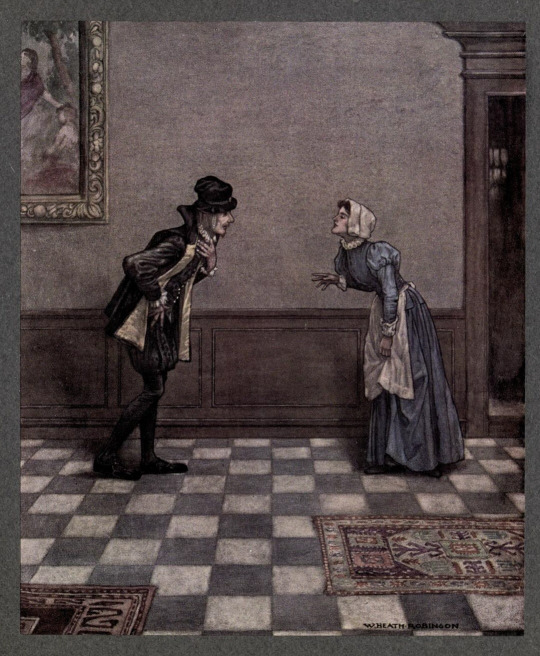

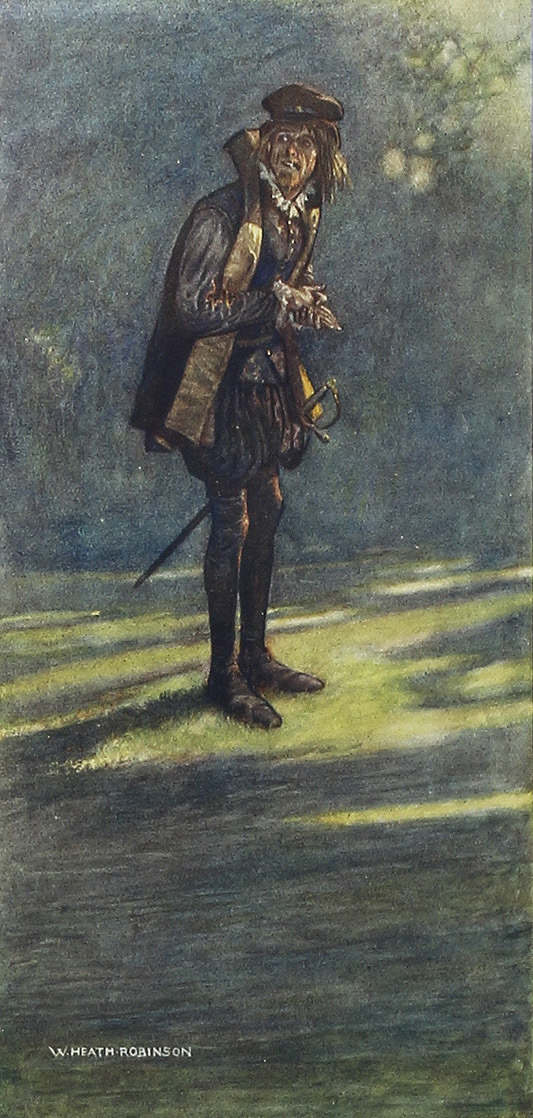
And he also did some very famous illustrations for A Midsummer Night's Dream


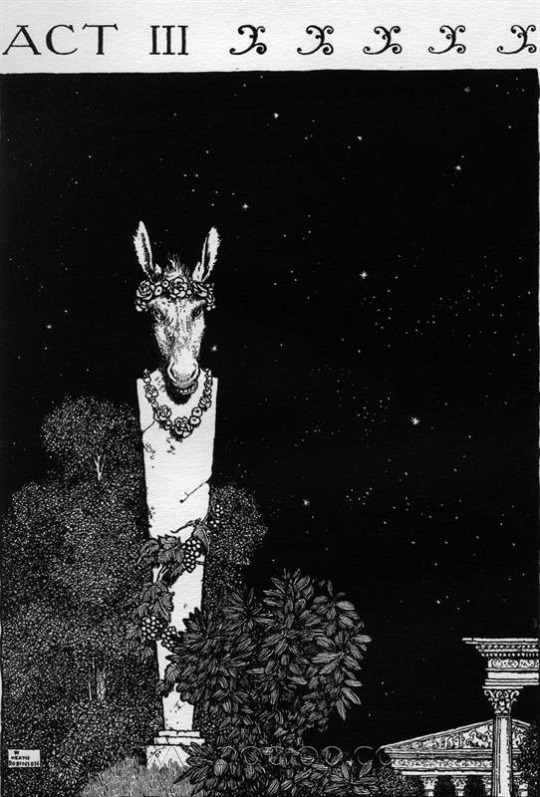

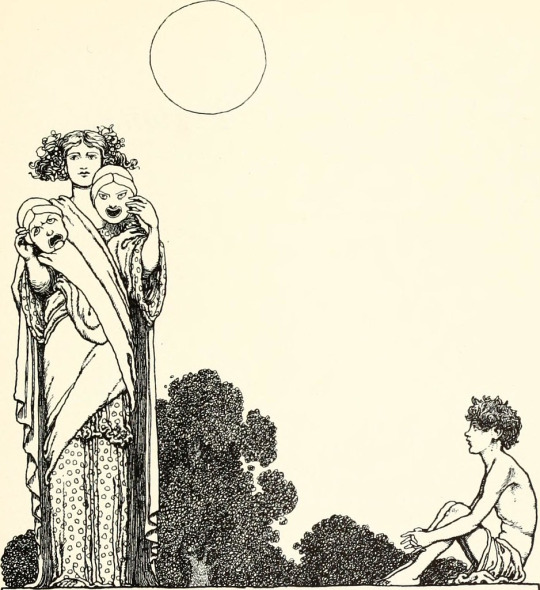
Robinson also did an illustrated version of "The Pantagruel and the Gargantua", sometimes grouped together as William Heath Robinson's The Rabelais.


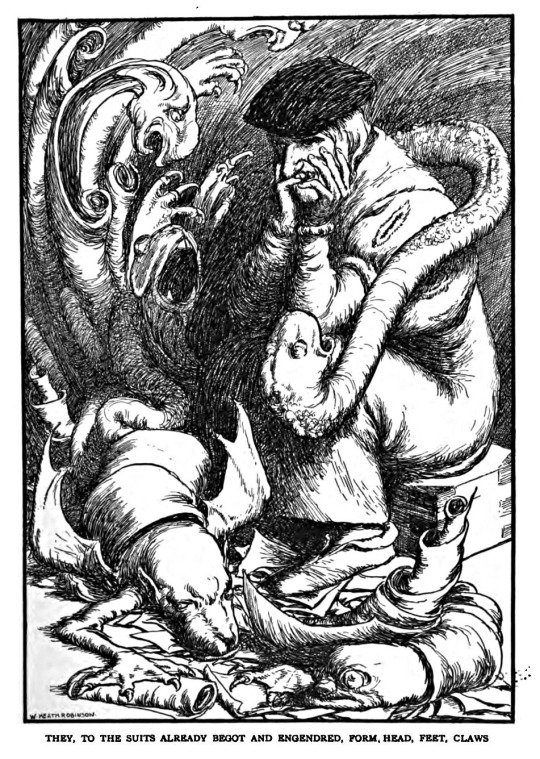
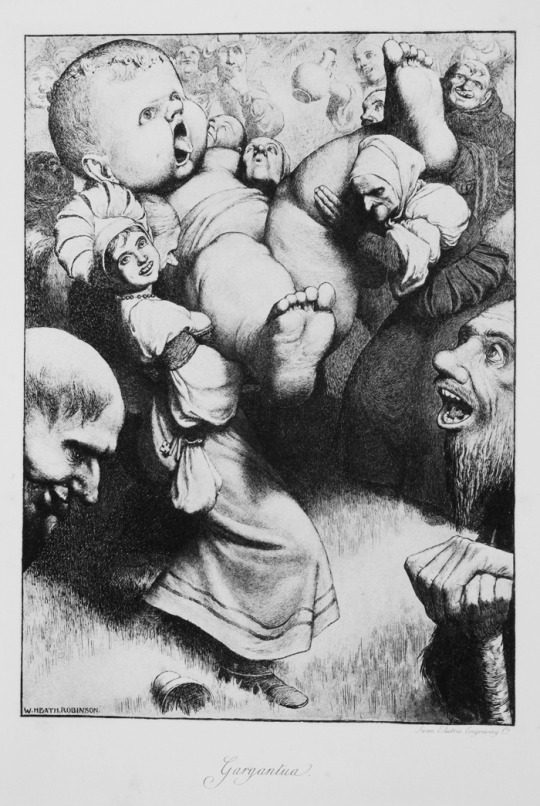



William Heath Robinson was also very as a fairytale illustrator - but since there's a lot more, I'll place them under a cut.
He illustrated Andersen's fairy tales...
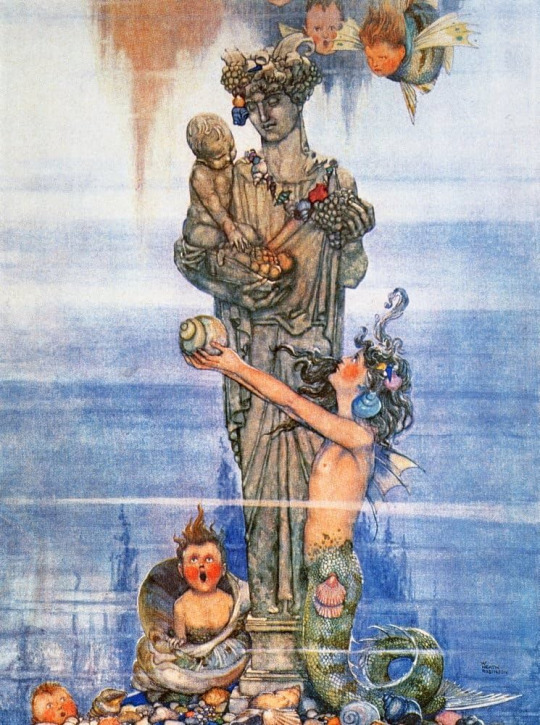
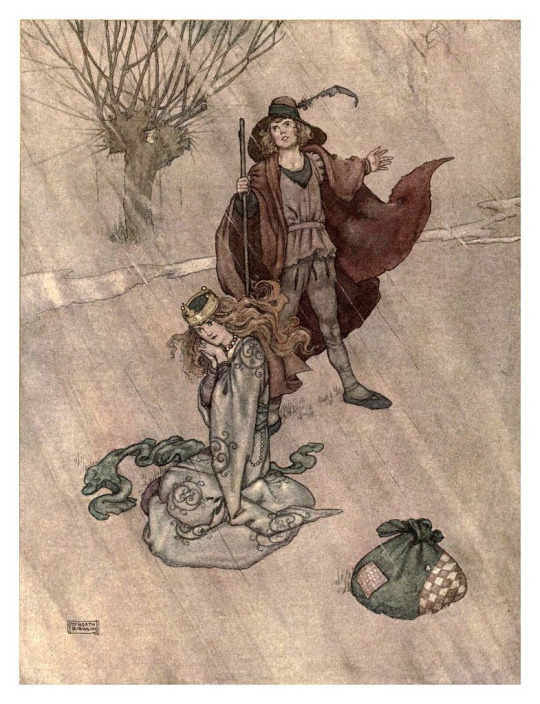
He created an illustrated version of "The Arabian Nights"...


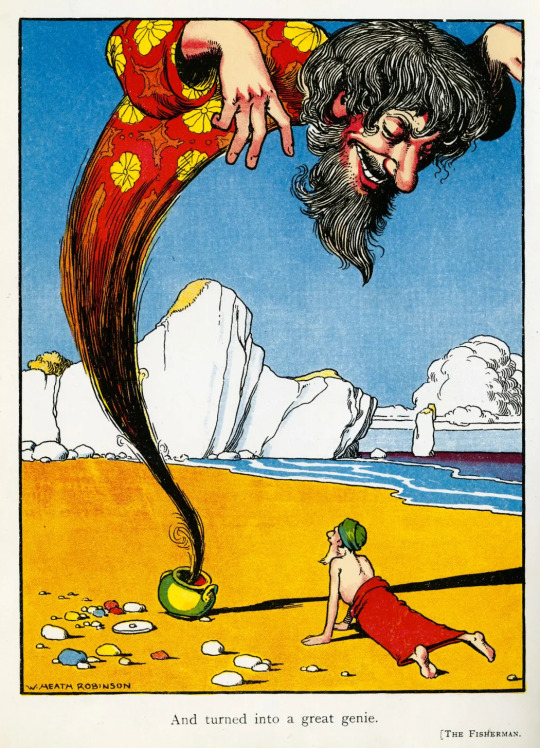
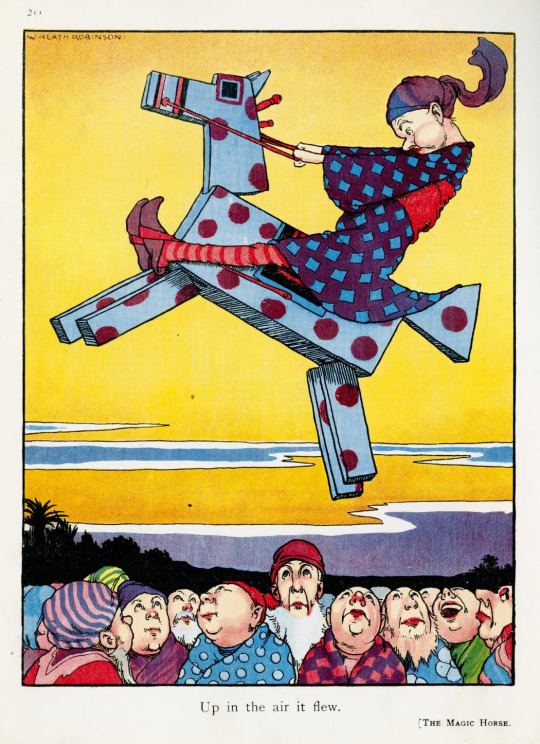

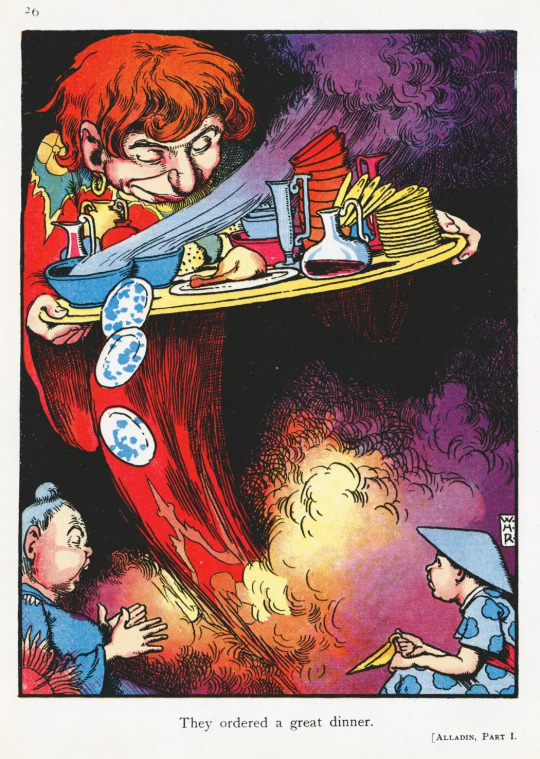
And he also illustrated various children-oriented productions, such as Walter de la Mare's "Peacock Pie" or Charles Kingsley's "The Water-Babies".




#william heath robinson#fantasy sights#fairytale illustrations#fairytale art#shakespearian illustrations#shakespeare art#a midsummer night's dream#twelfth night#the arabian nights#rabelais#gargantua#pantagruel
112 notes
·
View notes
Text
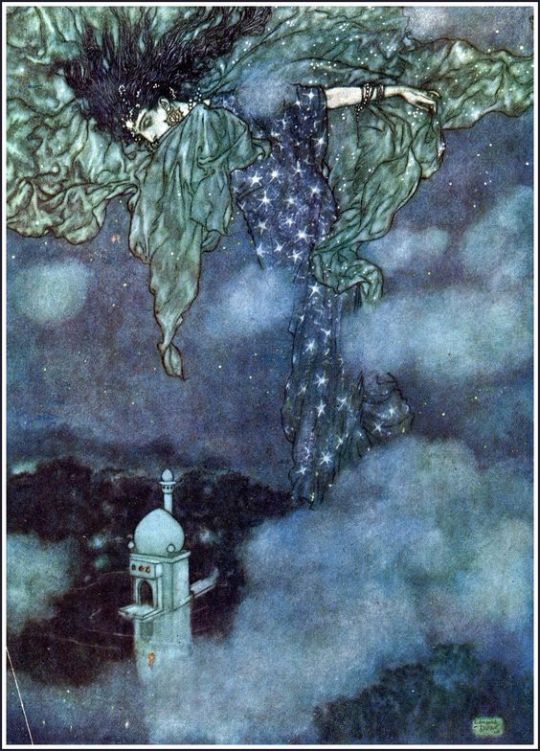

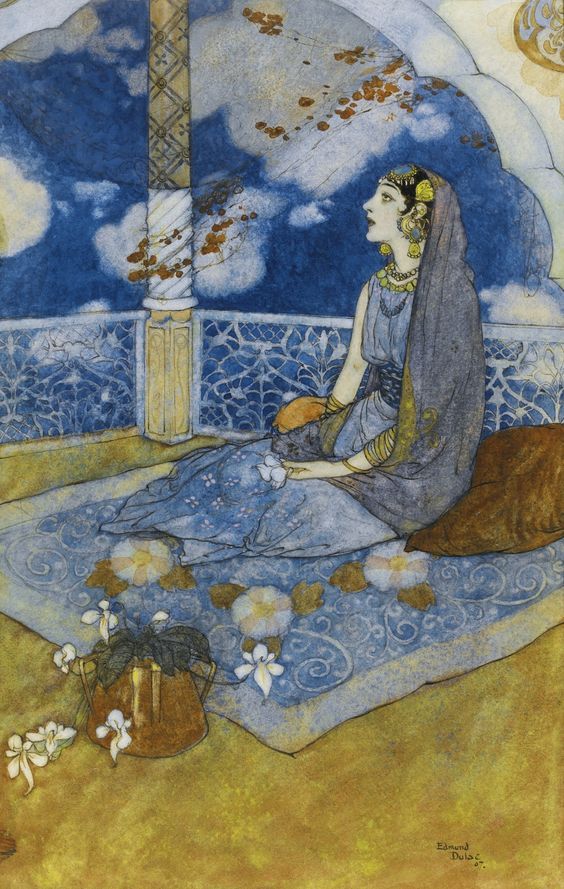
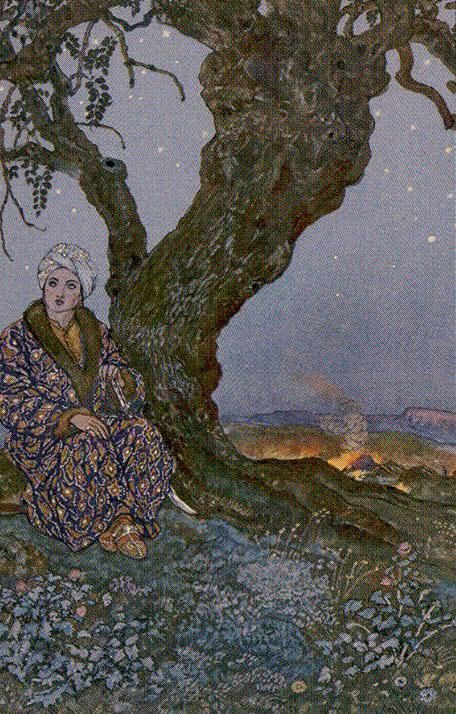
What’s your story? It’s all in the telling. Stories are compasses and architecture; we navigate by them, we build our sanctuaries and our prisons out of them, and to be without a story is to be lost in the vastness of a world that spreads in all directions like arctic tundra or sea ice. To love someone is to put yourself in their place, we say, which is to put yourself in their story, or figure out how to tell yourself their story.
Which means that a place is a story, and stories are geography, and empathy is first of all an act of imagination, a storyteller’s art, and then a way of traveling from here to there. What is it like to be the old man silenced by a stroke, the young man facing the executioner, the woman walking across the border, the child on the rollercoaster, the person you’ve only read about or the one next to you in bed?
We tell ourselves stories in order to live, or to justify taking lives, even our own, by violence or by numbness and the failure to live, tell ourselves stories that save us and stories that are the quicksand in which we thrash and the well in which we drown, stories of justification, of accursedness, of luck and star-crossed love, or versions clad in the cynicism that is at times a very elegant garment. Sometimes the story collapses, and it demands that we recognize we’ve been lost, or terrible, or ridiculous, or just stuck; sometimes change arrives like an ambulance or a supply drop. Not a few stories are sinking ships, and many of us go down with these ships even when the lifeboats are bobbing all around us.
In The Thousand and One Nights, known in English as The Arabian Nights, Scheharazade tells stories in order to keep the sultan in suspense from night to night so he will not kill her. The premise of the vast thicket of stories is that the sultan caught his queen in the embrace of a slave and decided to sleep with a virgin every night and slay her every morning so that he could not be cuckolded again. Scheherazade volunteered to try to end the massacre and did so by telling him stories that carried over from one night to the next for nights that stretched into years.
She spun stories around him that kept him in a cocoon of anticipation from which he eventually emerged a less murderous man. In the course of all this telling she bore three sons and delivered a labyrinth of stories within stories, stories of desire and deception and magic, of tranformation and testing, stories in which the action in one freezes as another storyteller opens his mouth, pregnant stories, stories to stop death.
Do you tell your story or does it tell you? Often, too often, stories saddle us, ride us, whip us onward, tell us what to do, and we do it without questioning. The task of learning to be free requires learning to hear them, to question them, to pause and hear silence, to name them and then to become the storyteller. Those ex-virgins who died were inside the sultan’s story; Scheharazade, like a working-class hero, seized control of the means of production, and talked her way out.
--The Faraway Nearby (2012)
[Rebecca Solnit]
#Storytellers#Scheharazade#The Arabian Nights#stories#The Faraway Nearby#Rebecca Solnit#quotes#words and writing
32 notes
·
View notes
Text
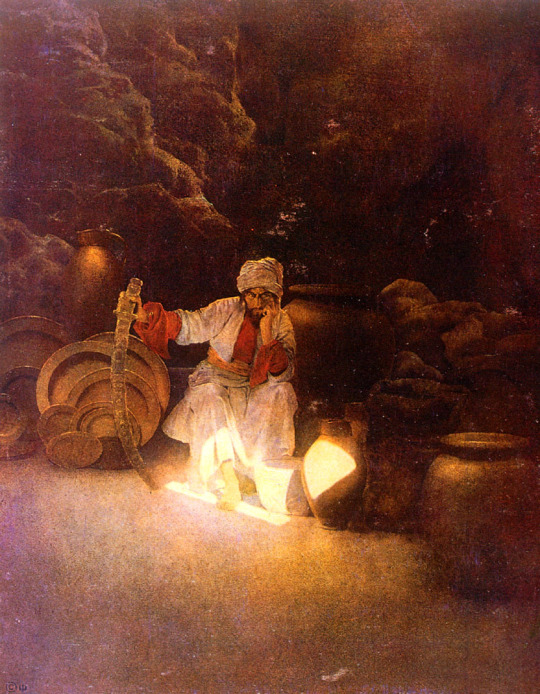
Maxfield Parrish, Cassim - Wikimedia
The Arabian Nights, Ali Baba and the forty thieves - Library of Congress
9 notes
·
View notes
Text

Edmund Dulac 'Taking her hand he led her to the apartment of the Queen Pirouze', from "The Arabian Nights" (1907)
Source
9 notes
·
View notes
Text
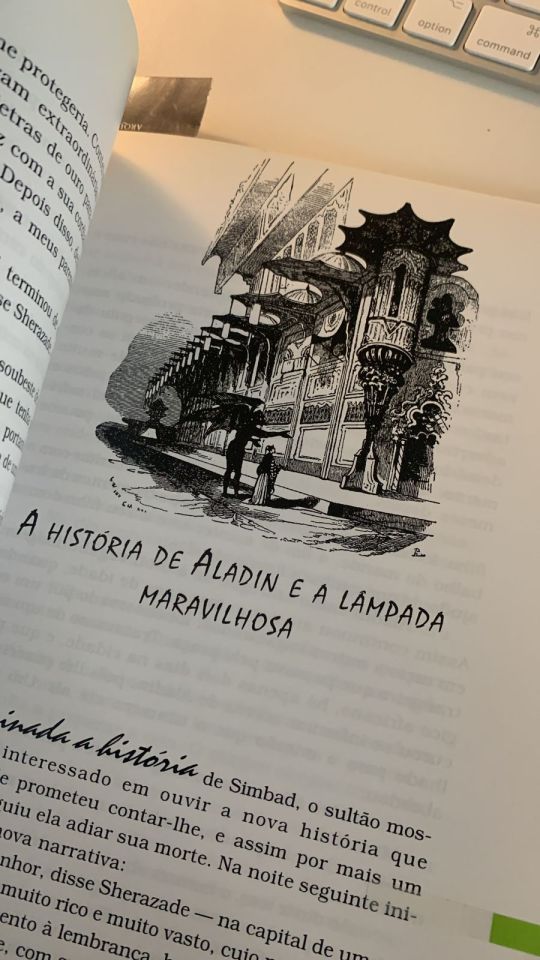
I'm reading The 1001 Nights and I've just reached Aladin's story and guess what? It's set in Ancient China! I was not expecting this.
#bookblr#the 1001 nights#the arabian nights#bookworm#book#reading#bookadiction#bibliophile#bookish#bookaholic
5 notes
·
View notes
Note
What is Scheherazade like?
Well… I mean her hair (👩), her eyes (👀), her body (🚶♀️) and some colors of her skin
Well, I tend to imagine her as beautiful, though of course it's not important that she be beautiful, her intelligence and knowledge of stories are what matters.
I picture her of medium height and slender, with light brown skin, deep brown eyes, and long, luxuriant black hair.
4 notes
·
View notes
Photo

1910 Leon Bakst, Odalisque Costume design for the ballet Sheherazade. Composers: Nikolai Rimsky-Korsakov.
Scheherazade is a major character, and the storyteller, of the Middle Eastern collection of tales known as One Thousand and One Nights (also known as The Arabian Nights).
#my edits#nikolai rimsky-korsakov#one thousand and one nights#the arabian nights#sheherazade#leon bakst#léon bakst#costume#costume design#1910 costume design#ballet#ballet sheherazade#odalisque#composers#rimsky-korsakov#arabian nights
15 notes
·
View notes
Text

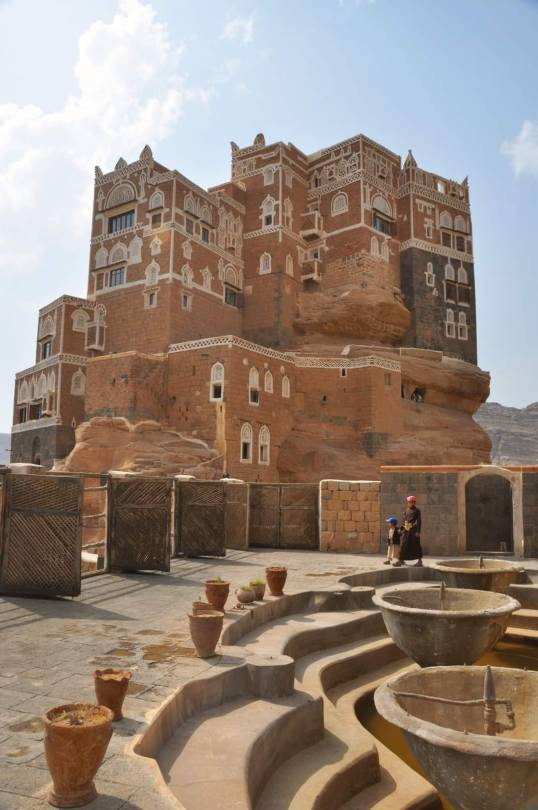
The Dar al-Hajar (Arabic: دار الحجر, "Stone House" or "Rock Palace") is a former royal palace located in Wadi Dhar about 15 kilometres (9.3 mi) from Sana'a, Yemen. Built in the 1920s as the summer retreat of Yahya Muhammad Hamid ed-Din, ruler of Yemen from 1904 to 1948, it sits on top of a structure built in 1786 for the scholar al-Imam Mansour. The palace stayed in the royal family until the Yemen revolution of 1962. The palace is now a museum. In 1974, Pier Paolo Pasolini used the palace as the home of Princess Dunya in his film The Arabian Nights.
#sana'a yemen#sana'a#yemen#dar al-hajar#arabic#stone house#rock palace#architecture#wadi dhar#yemeni architecture#west asia#west asian#west asian architecture#pier paolo pasolini#the arabian nights#former royal palace#museum
7 notes
·
View notes
Photo

Henry Justice Ford
#Henry Justice Ford#The Arabian nights#Andrew Lang#1898#serpents#sinbad#art#artwork#fantasy#snakes#valley of serpents#Illustration#sketch#R P G#RPG#R.P.G
67 notes
·
View notes
Photo

Aladdin, or The Wonderful Lamp.
#vintage illustration#aladdín#aladdin and the wonderful lamp#the arabian nights#the book of one thousand and one nights
3 notes
·
View notes
Text
so glad being over-educated and unemployable is an issue that resonated with medieval Baghdad:
I stayed with him for three days, and then he asked, “Do you know any craft by which to make your living?” I told him: “I am a lawyer, a scientist, a scribe, a mathematician and a calligrapher.” “There is no market for that kind of thing here,” he replied. “No one in this city has any knowledge of science or of writing and their only concern is making money.” “By God,” I said, “I know nothing apart from what I have told you.” He said, “Tighten your belt, take an axe and a rope and bring in firewood from the countryside. This will give you a livelihood until God brings you relief.”
— The Arabian Nights, Night 12, trans. Malcolm C. Lyons
#cutting a little too close to home tbh#love when old literature is a 1:1 mix of the completely batshit and the painfully familiar#the arabian nights#medieval arabic literature
6 notes
·
View notes
Text
Books of 2022
Persepolis, Marjane Satrapi-- I’m not typically a graphic novel person, but this one was pretty good. It follows the story of a young girl growing up in Iran, and how living in a country going through wars and political movements affected her childhood and her family.
Animal Farm, George Orwell--For some reason, I never had to read this one in High School, so thought it was high time that I read it. I understand why its a book used in HS literature, it definitely makes you think--who’s way was right? Is there a right way? Not entirely pleasant to think about, especially with the way the world is today, but that’s the point.
Custer’s Fall: The Native American Side of the Story, David Humphreys Miller--This was a really interesting read. It was basically compiled from a bunch of oral histories from Native Americans who either lived through the Battle of Little Bighorn, or were closely related to someone who was, and thus could tell their story. It never really occurred to me before that, even though no White men survived the battle, we never really heard the Native American side of the story. We always see Custer portrayed as a hero, even though he was defeated at the battle. Would definitely recommend if you’re into American history.
May Day, F. Scott Fitzgerald--Didn’t care for this one as much of his other short stories. It portrayed a snippet of a series of intertwining lives, giving us a glimpse of essentially one weekend, one night, really, in the lives of these people, and how they treated each other and how this impacted each of their lives.
Interview with the Vampire, Anne Rice--one of the few examples where I actually liked the movie better than the book. Granted, this was one of the first books ever written by Anne Rice (I think), so her writing probably got better with time, and by the movie came out, many of the other books in the series had already been written, so there was much more material to draw off of. However, still a fairly enjoyable book and an easy read.
The Arabian Nights: The Voyages of Sindbad the Sailor and Other Stories, edited by Andrew Lang--Although I’d already read one version of the Arabian Nights, this one contained stories--such as those of Sindbad, that I hadn’t read before. This translation didn’t flow as nicely as the other one I had read, with the stories flowing into each other, but was still a fun read.
The Murder of King Tut, James Patterson & Martin Dugard--This was an alright read. It was fun and quick to get through, but overall seemed lacking in plot. I think the title makes it seem like it will be more of a mystery/thriller than it was.
Ubu Roi, Alfred Jarry--I got this book from a friend who said it was one of her favorite plays. Its basically a spoof on a lot of the “classic”/shakespearian dramas, and does follow those basic plotlines but in a much more vulgar way. It was an entertaining, if not strange, read. Reminded me a lot of some of the plays I would write when I was younger.
The Drawing of the Three, Stephen King--Book 2 of the Gunslinger series, I didn’t care for this one as much as the first. Again, it’s a lot of setup for the rest of the series and introduction to more important characters, but I wasn’t as drawn to it as the first book. I’ll still continue to read the rest of the series, though.
London, Edward Rutherford--This is a LONG book, it took me several months to plug through. However, it was a very enjoyable read, detailing the history of London from prehistory to now. It follows a series of families, following their ancestors through time and just seeing how everyday people lived through all these historic times. A very interesting read.
#persepolis#mariane satrapi#animal farm#George Orwell#custers fall#David Humphreys Miller#may day#f scott fitzgerald#interview with the vampire#anne rice#the arabian nights#voyages of sindbad the sailor#andrew lang#the murder of king tut#james patterson#ubi roi#alfred jarry#The Drawing of the Three#stephen king#london#Edward Rutherford#books#good books
2 notes
·
View notes
Text

✩🧞✨Review:
Ahdieh’s retelling of “The Arabian Nights” is made magical by her prose.
Unfortunately, I did not love this book as much as I would’ve had I read it in middle school. As someone early in their twenties, I found myself getting frequently frustrated by the rash decisions made by Shahrzad (Shazi)—the novel’s sixteen-year-old protagonist—and how quickly she abandoned her revenge plot even though I likely would have had the same impulsive behavior at that age.
I also had trouble investing in the romantic relationship between Shazi and Khalid (her love interest and the Caliph of Khorasan) because it developed too quickly for my tastes and did not seem believable as a result. Shazi claimed to hate him so much because of the women he killed, his difficult personality, and the numerous secrets he kept from her, but then fell for him at a moment’s notice citing his dashing appearance. Both characters presented many red flags, Shazi especially for initiating strange sexual encounters that I could not wrap my brain around.
While their romantic connection forms almost instantly, the novel’s main conflict does not present itself until the very end, which is frustrating. I did, however, enjoy Ahdieh’s beautiful, immersive prose. She uses language that is reminiscent of her source material to build a world with magic and deadly curses that the reader explores through alternating points-of-view.
➤ 4 stars
Cross-posted to: Instagram | Amazon | Goodreads | StoryGraph
#twatd#the wrath and the dawn#shahrzad and khalid#shahrzad al-khayzuran#khalid ibn al-rashid#1001 nights#the arabian nights#1001 arabian nights#renee ahdieh#enemies to lovers#love triangle#ya retelling#Royal Romance#multiple POVs#ya fantasy#ya romance#fantasy romance#booklr#book blog#book blogger#bookish#book review#YA Reads#ya recs
3 notes
·
View notes
Text

1 note
·
View note